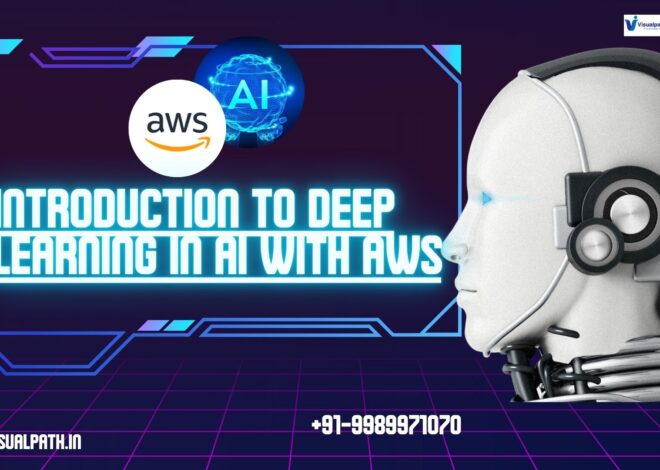In artificial intelligence (AI) and machine learning, preprocessing data is a crucial step to ensure models perform efficiently and accurately. Techniques like binning, transforming, encoding, scaling, and shuffling help optimize datasets for training. With AWS’s advanced services, these processes are streamlined and scalable, making it ideal for building AI solutions. This article explores these techniques, leveraging insights from an AWS AI Course and preparing for an AWS AI Certification.
1. Binning in AI with AWS
Binning is the process of converting continuous variables into discrete categories or bins, simplifying data representation. For example, ages could be binned into ranges like “18-25,” “26-35,” etc.
- Why Binning is Important:
- Reduces noise in the dataset.
- Helps detect patterns and outliers.
- Simplifies data for algorithms sensitive to numerical ranges.
- AWS Tools for Binning:
- Use AWS Glue to preprocess and bin data in your ETL workflows.
- With AWS SageMaker Processing, you can script custom binning logic in Python or R using tools like Pandas.
2. Transforming Data
Data transformation involves modifying datasets to make them suitable for AI models. This can include normalizing, log transformations, or feature extraction.
- Benefits of Transformation:
- Makes data consistent and model-ready.
- Helps reduce skewness and improves model performance.
- AWS Services for Data Transformation:
- Amazon S3 for storing raw data.
- AWS Glue for automating transformation workflows.
- Use AWS Lambda for lightweight, real-time transformations on streaming data.
Real-world scenarios, like processing financial transaction logs or IoT sensor data, often involve data transformation tasks covered in an AWS AI Course.
3. Encoding in AI with AWS
Encoding transforms categorical variables into numerical formats that machine learning algorithms can understand.
- Types of Encoding:
- One-Hot Encoding: Creates binary columns for each category.
- Label Encoding: Assigns numeric labels to categories.
- AWS Tools for Encoding:
- With Amazon SageMaker, you can implement encoding using built-in Jupyter notebooks.
- Preprocess categorical data in real-time with AWS Glue or AWS Data Wrangler, ensuring compatibility with AI models.
Understanding encoding techniques is essential for anyone pursuing AWS AI Certification as it directly impacts model training.
4. Scaling in AI with AWS
Scaling adjusts the range of numerical features to ensure they are proportional and contribute equally to the model.
- Why Scaling Matters:
- Prevents features with larger ranges from dominating the model.
- Improves convergence speed during training.
- AWS Tools for Scaling:
- Amazon SageMaker supports feature scaling using Scikit-learn libraries.
- For large-scale data, integrate AWS Glue or EMR with tools like Apache Spark for efficient scaling.
Scaling is often applied to image pixel values, financial data, or any dataset where feature magnitudes vary greatly.
5. Shuffling Data
Shuffling rearranges data samples to eliminate order-based biases, ensuring models learn more general patterns.
- Significance of Shuffling:
- Prevents overfitting to sequences in data.
- Improves randomness in batches for training.
- AWS Solutions for Shuffling:
- Use Amazon SageMaker Data Wrangler for preparing and shuffling data.
- For distributed datasets, leverage Amazon S3 with shuffling algorithms.
Shuffling plays a pivotal role in deep learning, especially in scenarios involving time-series or sequential data, topics often highlighted in AWS AI Courses.
AWS AI Course and Certification
To master these preprocessing techniques, enrolling in an AWS AI Course or pursuing an AWS AI Certification is highly beneficial. These programs offer hands-on training with tools like Amazon SageMaker, AWS Glue, and AWS Lambda, helping you:
- Understand preprocessing pipelines.
- Apply these techniques to real-world AI problems.
- Build scalable AI models efficiently.
Conclusion
Mastering preprocessing techniques like binning, transforming, encoding, scaling, and shuffling is key to building high-performance AI tools. AWS provides powerful services to handle these tasks, ensuring scalability and efficiency. By enrolling in an AWS AI Course and earning an AWS AI Certification, you can gain the expertise needed to harness AWS’s capabilities for AI development, setting you apart in the competitive AI industry.
Visualpath is the Leading and Best Software Online Training Institute in Hyderabad. Avail complete AI With AWS institute in Hyderabad AWS AI Course Worldwide. You will get the best course at an affordable cost.
Attend Free Demo
Call on – +91-9989971070




